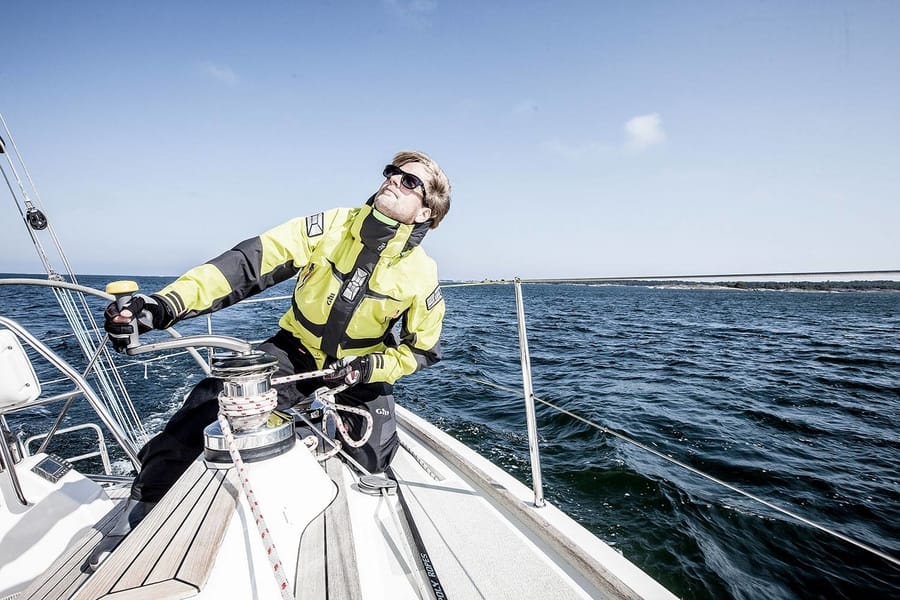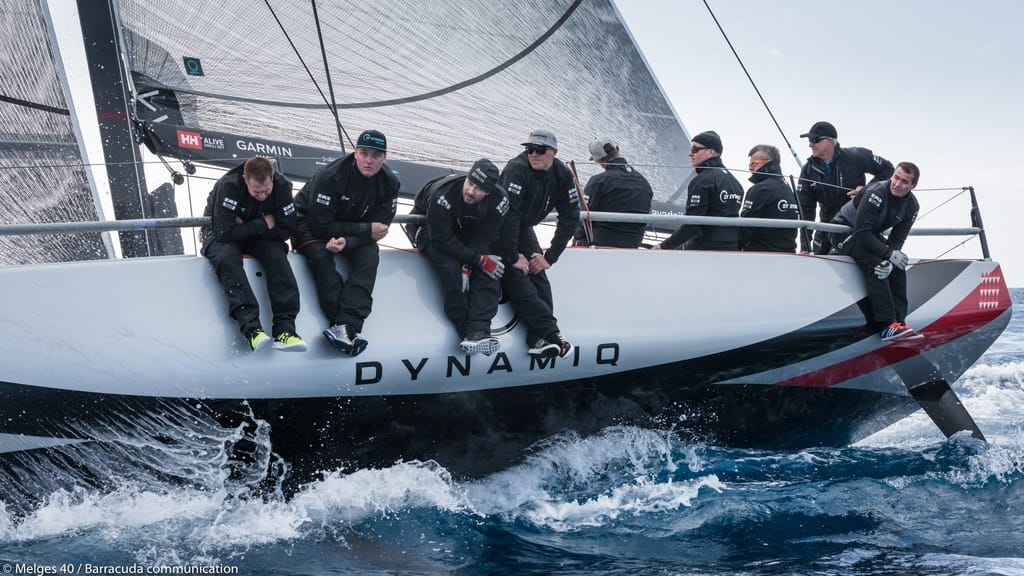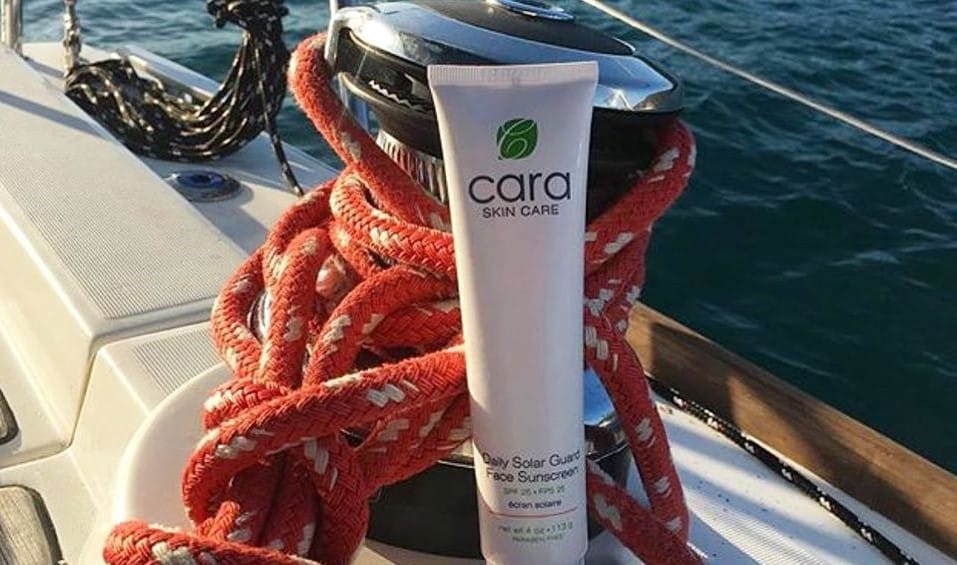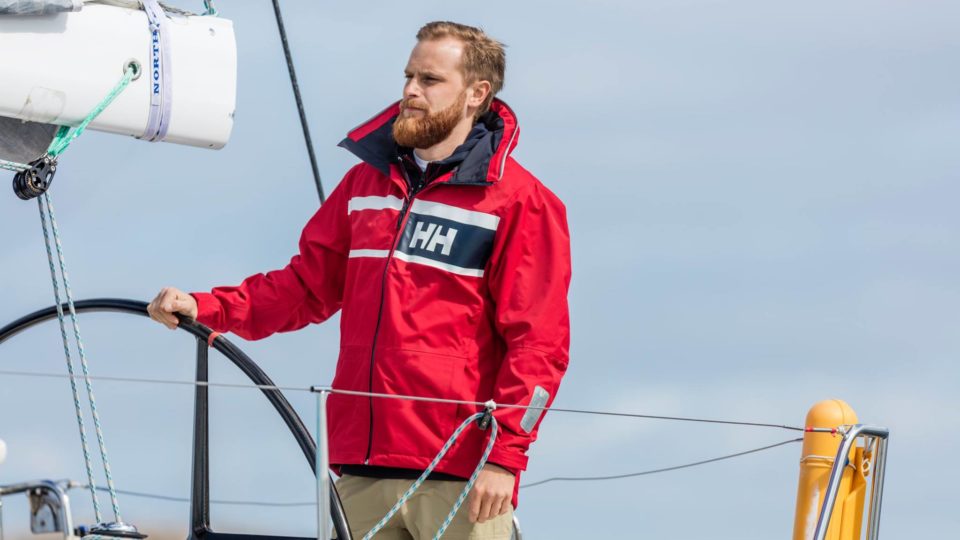What To Wear When Sailing
One of the most common responses when you invite someone to come sailing with you is “Great, but what do I wear?”. If you sail in a hot climate, all you may need for cruising is a T-shirt, shorts, sailing shoes, and sunglasses, plus a fleece for cooler evenings. But much sailing takes place in colder climates where more clothing will be required to keep you warm and dry in a range of conditions. Modern breathable fabrics help reduce sweating inside waterproof garments.
What To Wear When Sailing In Cold Weather
Cold, wet weather offers more challenges to staying comfortable. Remember, just because a day looks dry and warm in the morning doesn’t mean it’s going to stay that way. Be prepared for a change in the weather, and carry your gear with you. The best defense against cold weather is a layered approach, from long underwear to a long-sleeved shirt and pants to a sweater or sweatshirt to an insulated jacket to foul-weather gear. Keeping your hands, feet, and head warm with gloves, wool socks, and a hat is essential for comfort.
- Keep Yourself Warm: In cold or wind, you must stay dry inside wind- and waterproof clothing that retains your body heat. Wet skin gets cold 30 times quicker than dry skin, so your clothing must keep moisture away from the skin while maintaining dry, warm air close to the body. This is the best value-for-money outfit for cold-weather sailing.
- Adjustable Wrist and Ankle Seals: These provide a comfortable, water-resistant fit when worn with shoes, boots, or gloves. If conditions are extremely wet, neoprene seals provide a good grip at the wrists without constricting blood flow.
- Thermal Underwear: Modern lightweight thermal clothing wicks perspiration away from the skin and is perfect to wear under a waterproof outer layer.

Trousers
- High-Cut Trousers: Choose a design with heavily reinforced knees and seat to add durability.
- Bib-and-Braces Design: Many sailors favor this style. Like all sailing trousers, they should be a loose fit to allow you to wear warm layers underneath.
- Desirable Features: Look for a heavy-duty two-way zip with flaps, hand-warmer fleece-lined pockets, and adjustable ankle closures and braces.
- Add Layers: In cold conditions, you should wear warm layers underneath the trousers and a water – and windproof jacket over the top.
What To Wear When Sailing In Warm Weather
If you want to enjoy sailing, you’ve got to be comfortable. Preparation is the key, so put together a sailing gear bag for yourself with clothing and gear that will protect you and make you feel at ease in all weather conditions. Whether it’s cloudy or sunny, protect yourself with sunscreen, using Sun Protection Factor (SPF) 30 or higher. You can get burned even on a cloudy day, especially with the sun’s rays reflecting off the water.
- Keeping Yourself Cool: Shorts and T-shirts are the best clothes for sailing in hot weather.
- Don’t Forget: Whether or not the sun is shining, always use protection against sunburn on exposed skin.
What to Wean in Your Head, Hands, and Feet
It is important to protect your head, eyes, and skin from the elements. Much heat can be lost through the head. Eyes can be damaged by strong sunlight reflected off the water, as can the skin. Wear sunglasses and use protective sunscreen. Footwear needs to provide a secure grip on deck as well as protection against cold and wet.
Hats and Hoods
- Hood: Most waterproof jackets have a hood to keep your head dry and protect it from wind in rough conditions. Make sure the hood fits well and does not impede your peripheral vision.
- High Collar: Protect the lower part of your face from wind, rain, and spray with a high collar secured by velcro seals. Try a jacket on with the collar raised before you buy to make sure it is a comfortable fit and does not chafe your skin.
- Baseball Cap: This is a popular choice for protecting the head from the sun when sailing in good weather. Choose one that is adjustable and which has a retaining clip to prevent it from being lost if it blows off.
- Thermal Hat: A warm hat is very useful when sailing in cold weather as it will keep your head warm and can be used under the hood of a waterproof jacket in wet or rough weather.

Choosing Eyeware
Sunglasses cut down the glare from the water and ease eye strain. Attach “keepers” (a cord around your neck) to your sunglasses to keep from losing them overboard.
- Eye Protection: It is vital when sailing to protect your eyes from UV reflection off the water.
- Good-Quality Sunglasses: Consider choosing polaroid lenses as they allow you to see under the surface of the water more easily.
- Wrap-around Design: Look for glasses that have a wrap-around, close-fitting frame, and are large enough to cover your eyes to minimize light leakage around the sides, top, or bottom.
- Retaining Cord: Use a secure cord to prevent your sunglasses from being knocked off and lost.
These cheap ones from Amazon will do the trick. Don’t forget to get a floating retainer strap too.
Using Sunscreen
- Sun protection factor (SPF) Protect your skin with a product with a high SPF. Sensitive areas such as lips and nose should be protected by total sunblock.
- Water-resistance. Choose a sunscreen that is water-resistant and use on all exposed skin.
- Regular application Apply sunscreen liberally and keep reapplying regularly.
- Grey days Cloudy conditions are no protection from UV light, and reflection of the sea increases UV exposure.
- After sailing. Use moisturizing cream after sailing to combat the drying effects of wind and salt.

Choosing Shoes
Most deck shoes have “razor cut” soles with thin slits that open as the foot is flexed, allowing the shoe to grip a wet deck. Unless you like scrubbing decks, make sure your soles are white.
- Made for Purpose: Always wear footwear designed for sailing. Good quality sailing shoes and boots have non-slip soles, made from materials that do not mark the deck.
- Best Choice for Cold Weather: Uppers made from leather or synthetic materials and a waterproof, breathable lining allow the boot to breathe. These provide maximum foot comfort in wet and cold weather.
- Budget Choice: Rubber boots are the most inexpensive choice. Make sure they have a good non-slip sole and pick a size that offers sufficient room for a thick pair of socks, and that allows for easy removal.
- Deck Shoes: For cruiser sailing in moderate conditions, good-quality deck shoes will provide a good grip on deck and protect your feet.
- Lightweight Shoes: These are suitable footwear when you are yacht sailing in warm conditions. Synthetic materials dry more quickly than leather.
- Soft Soles: Sailing shoes and boots have soles made of a softer material than regular shoes. They will wear out more quickly if you use them ashore.
>>Best Fishing Boots For Boats
Wearing Sailing Gloves
Sailing gloves (with cutaway finger tips) protect your hands and allow dexterity to work on delicate tasks.
- Good Grip: Sailing gloves have reinforced palms to help you to handle thin, loaded lines. You can choose gloves with full-fingers or half-fingers.
- Warm Hands: When sailing at night or in cold weather, a pair of fleece-lined gloves will help keep you comfortable.
>>Check out the Best Sailing Gloves
Life Jacket and Harness
Life jackets, also known as Personal Flotation Devices or PFDs in Coast Guard vocabulary, are essential. They must be carried on all boats, and we recommend they be worn all the time during sailing; especially on cold windy days.
The best way to keep safe is to stay on the boat. This makes a safety harness and lifeline (a line attaching you to the boat) the most vital items of safety gear. If you fall overboard, a life jacket keeps you afloat. The skipper should instruct the crew when to wear a harness and life jacket, but you must always wear them in poor conditions and at night.
If you think sailing while wearing a life jacket is uncomfortable you can try an inflatable one. They are a bit more expensive but they are very comfortable.
Wearing a Life Jacket and Harness
- Separate or Integrated: You can buy a separate life jacket and harness, although an integrated harness and life jacket may be a more convenient option.
- Comfort and Security: Always pick a harness with wide, comfortable straps and crotch straps.
- Adjustment Tighten: the straps so that the life jacket is a snug but comfortable fit. Make sure that the waist buckle is properly engaged and secure. Make these adjustments before you set off so that the life jacket is ready for use when you need it.
- Crotch Straps: These provide maximum safety as they will prevent the life jacket from riding up when it is inflated.
Know The Features Of Your Life Jacket
- Automatically Inflated Life Jacket: This is the most practical life jacket for cruising. The CO2 cylinder that inflates the life jacket may be activated automatically on entering water or by pulling a toggle. The life jacket also has an oral inflator.
- Additional Features: For added safety, there should be a whistle, an automatic water-activated light (to help you to be seen if you go overboard at night), and retro-reflective strips.
Lifeline
- Lifeline Design: The best lifeline to use is one with a one-handed double-action safety hook at each end.
- Elasticated Lifelines: These reduce the length of the lifeline when not under tension.
- Double Lifelines: Incorporating both a long and a short lifeline (see p.19), is very useful when moving about the boat.
- Overload Indicator: Lifelines with an overload indicator let you know when they need to be replaced.
Watches
Watches tend to take a beating on a boat. When you go sailing, do not wear a fine timepiece and wear an affordable, water resistant model on the water. This model is also great for sailing since it does a lot more than telling the time and is relatively inexpensive.
